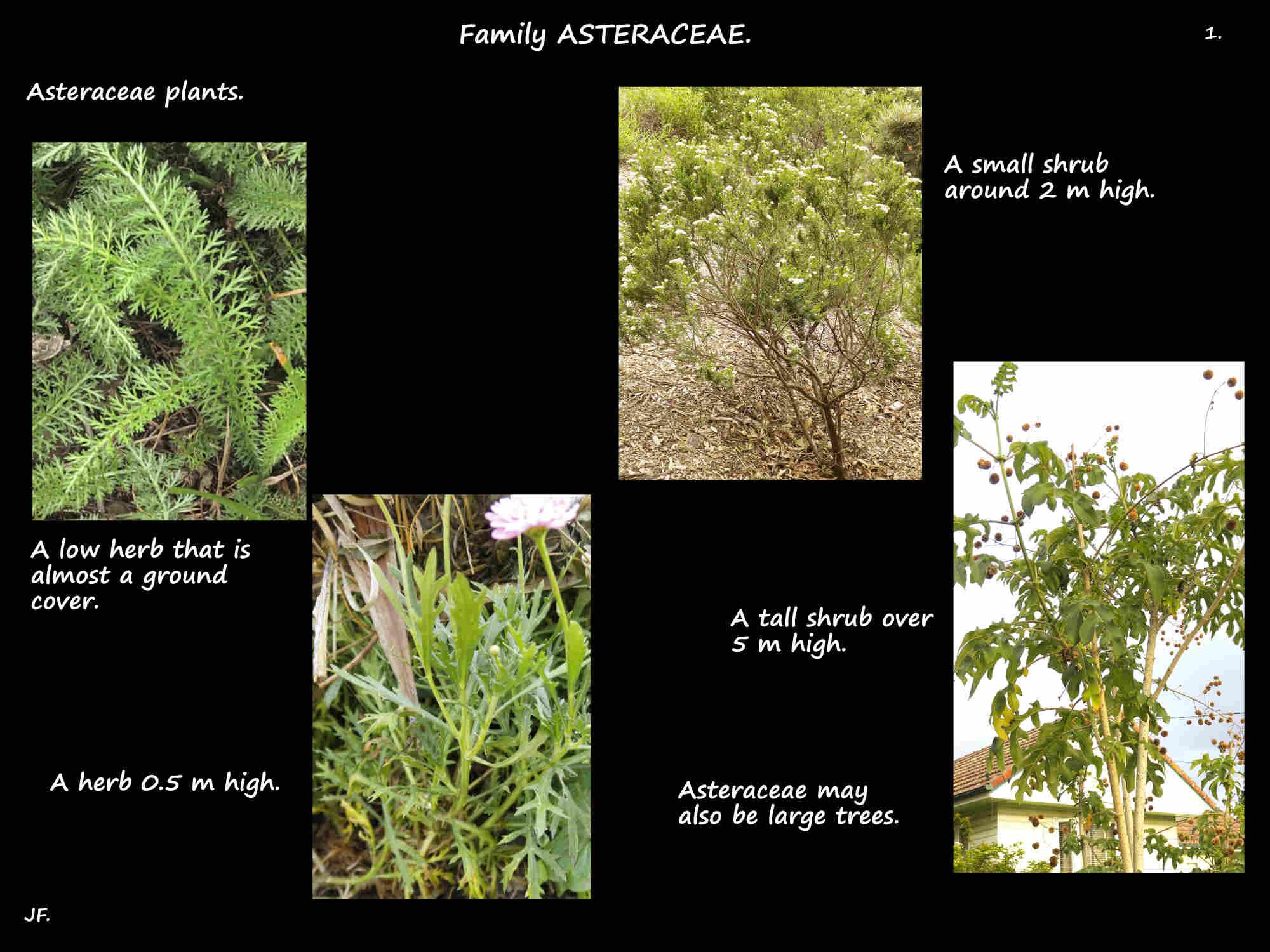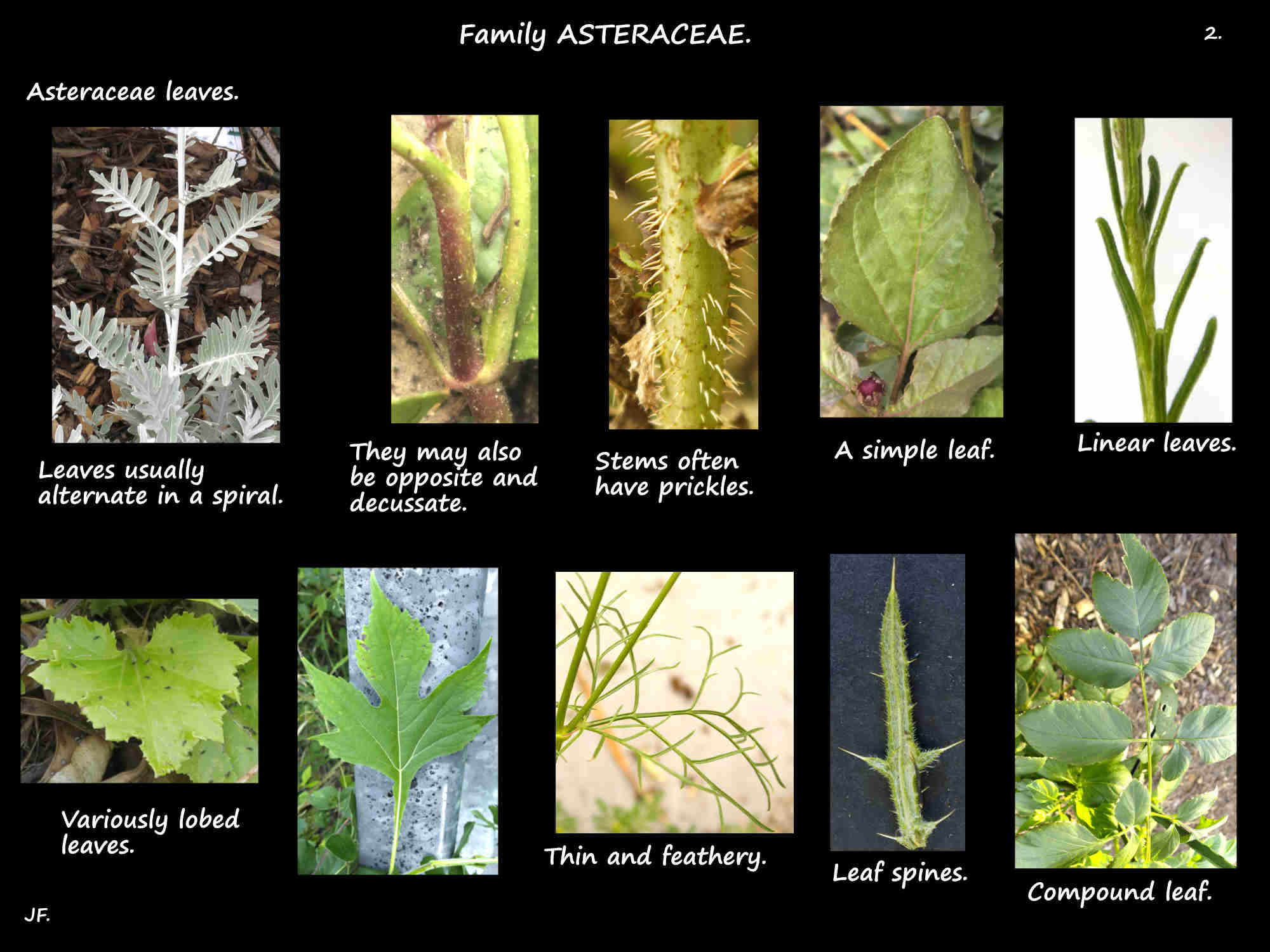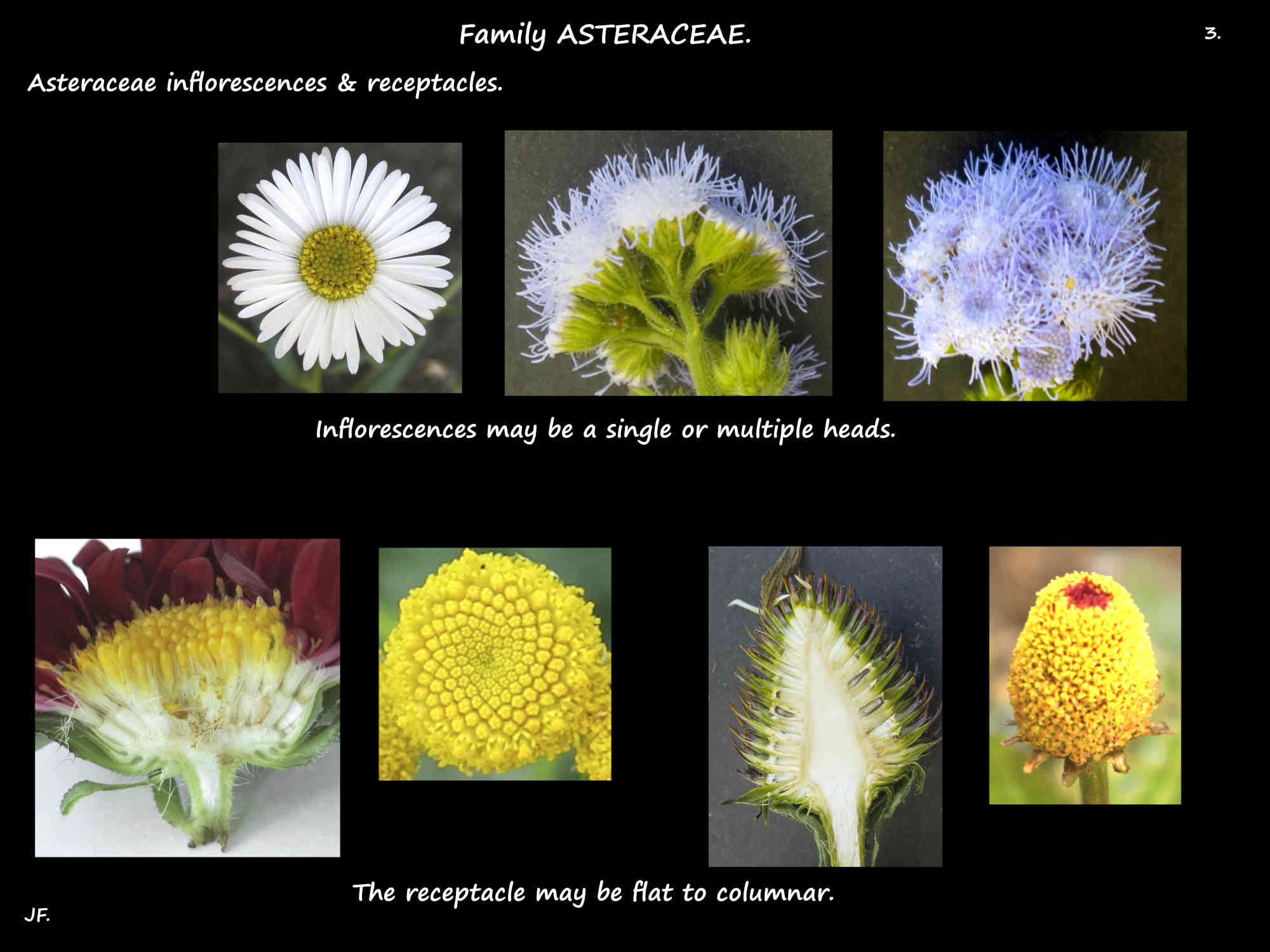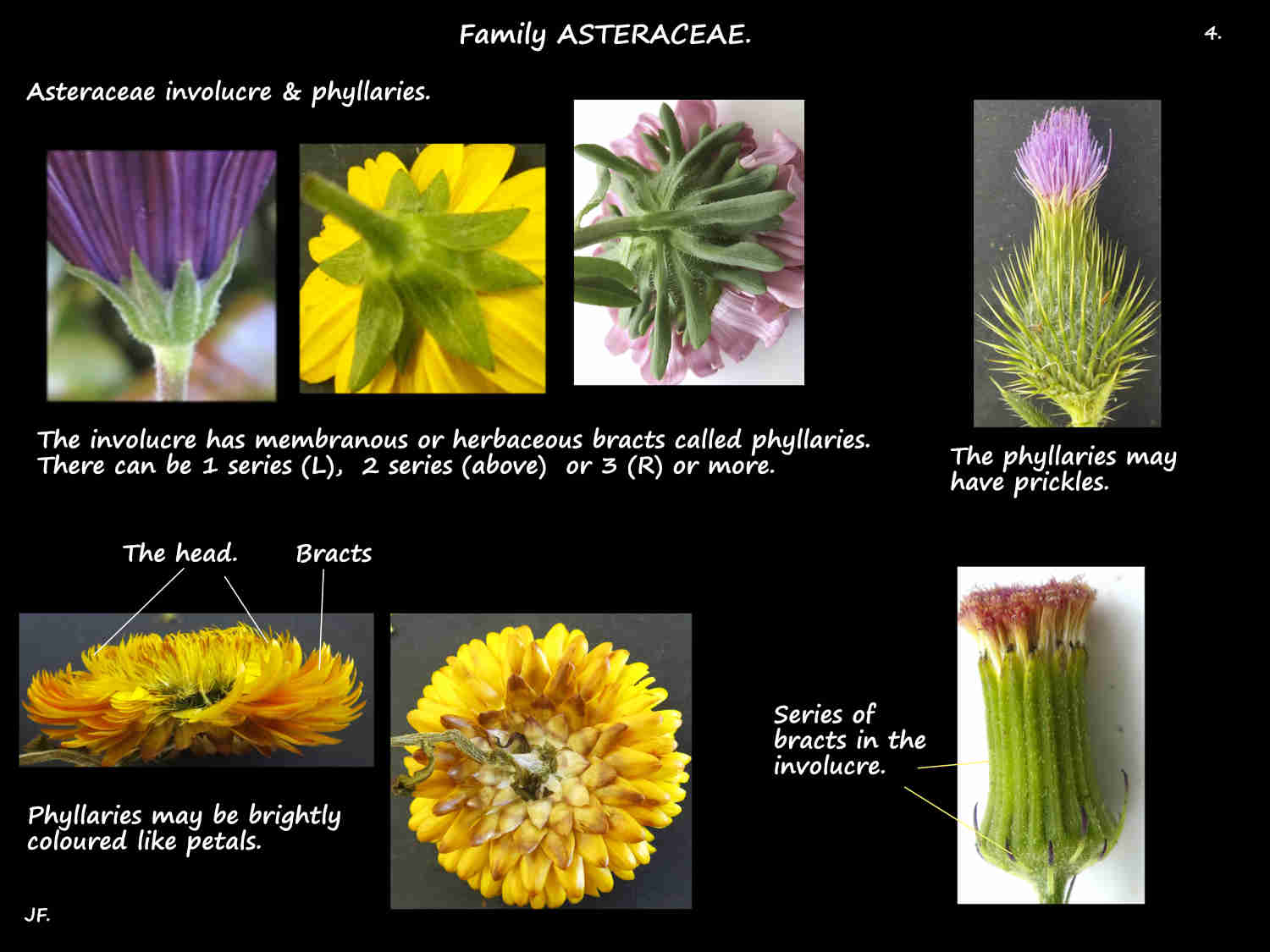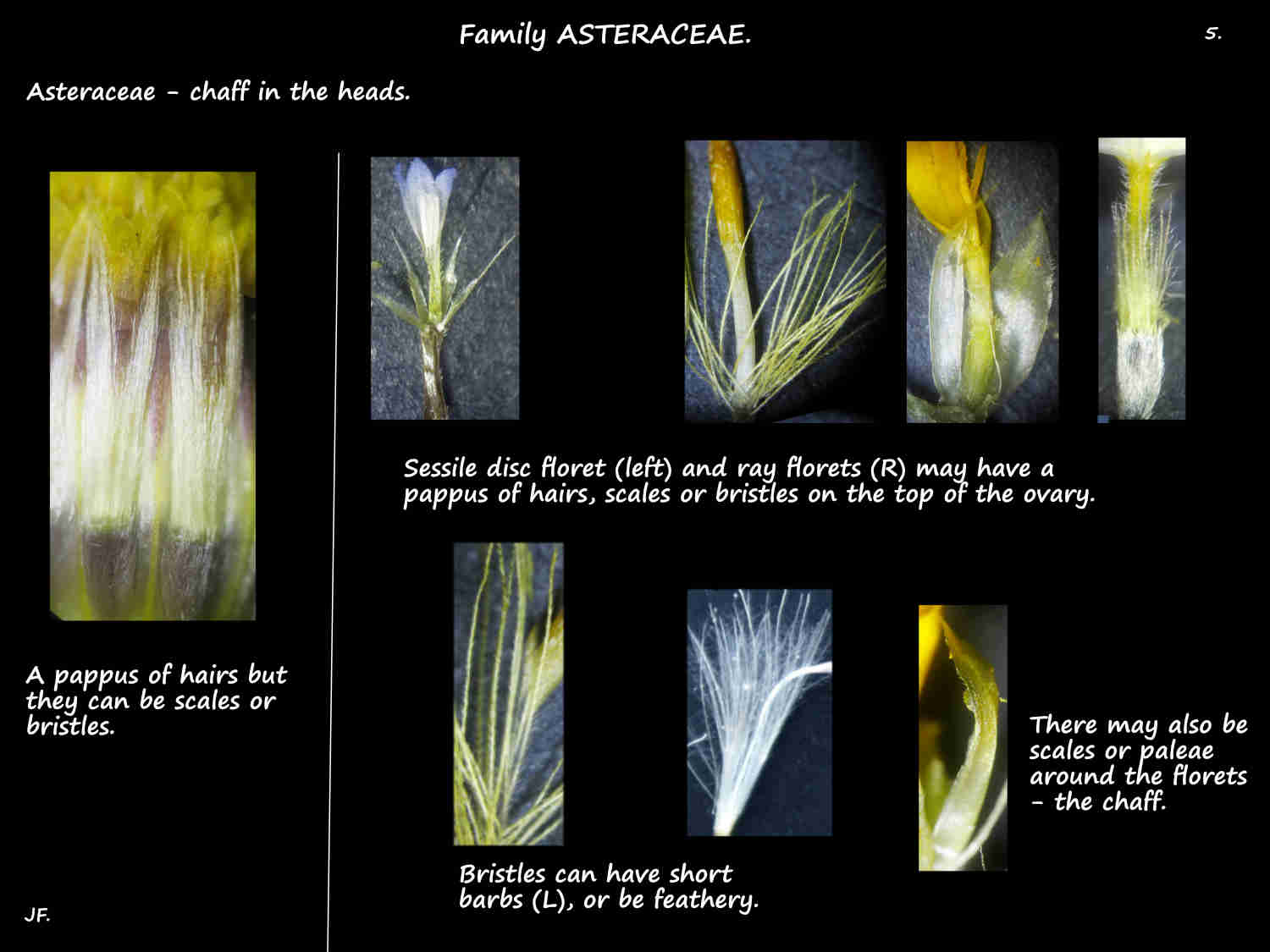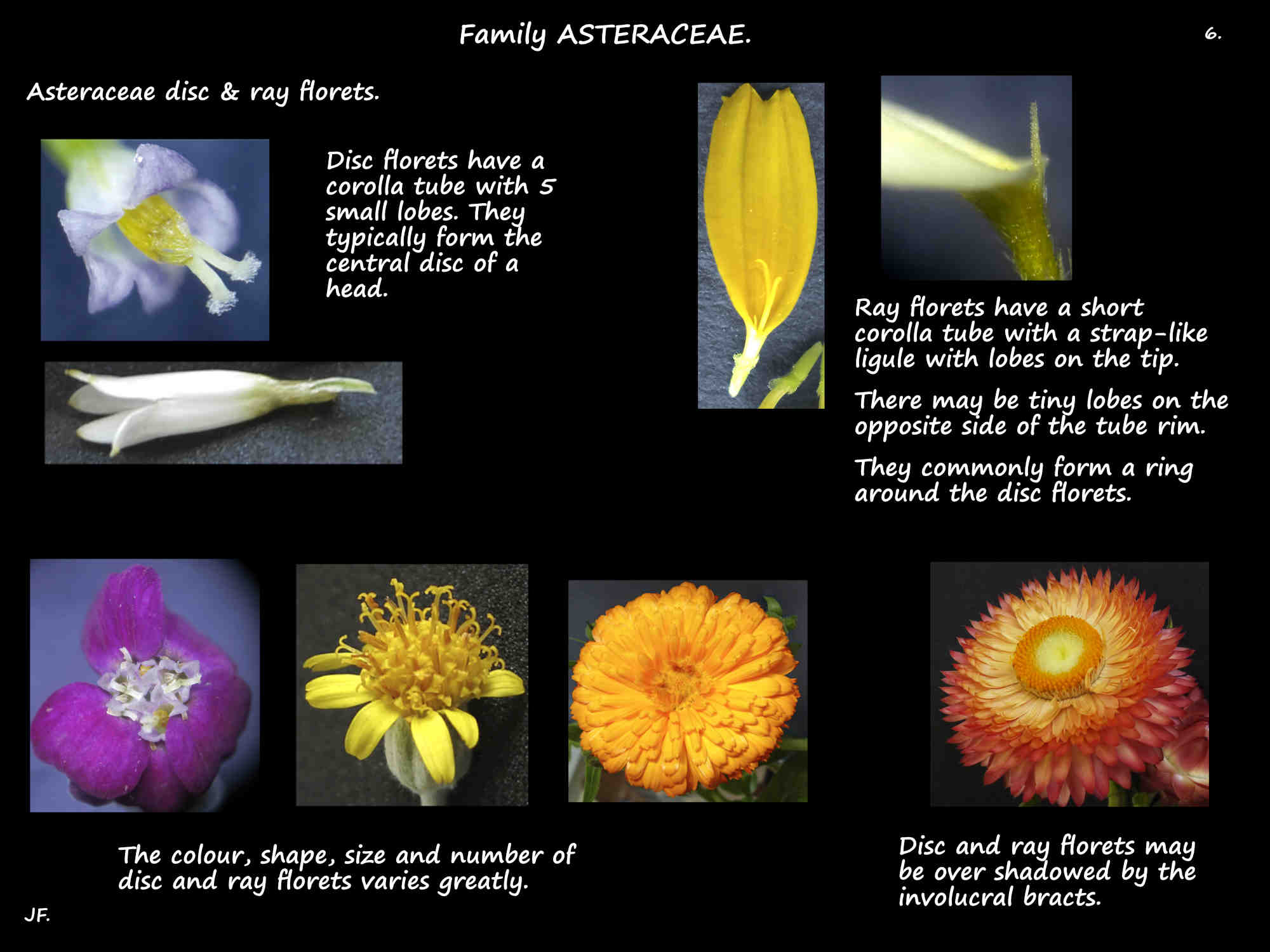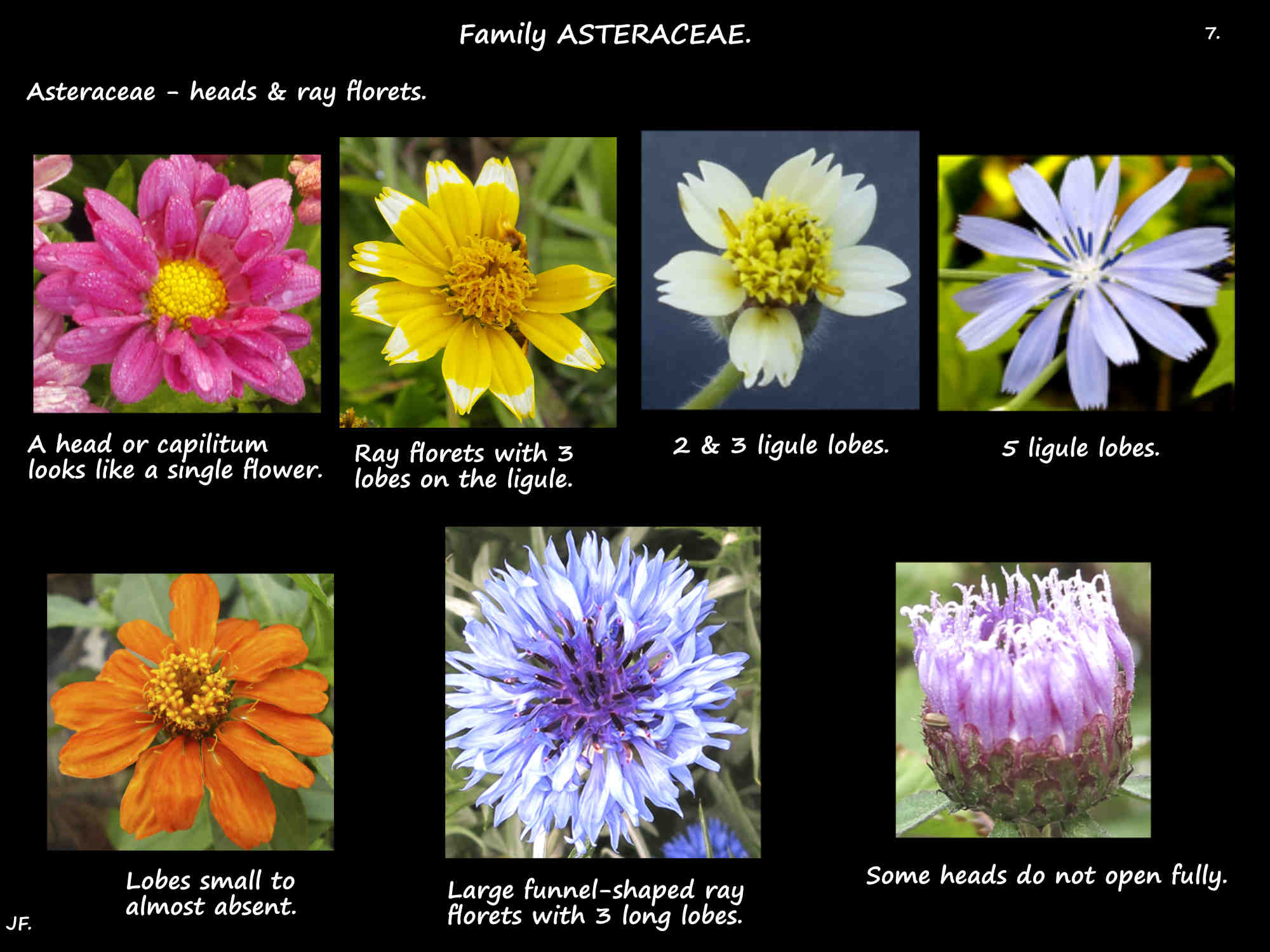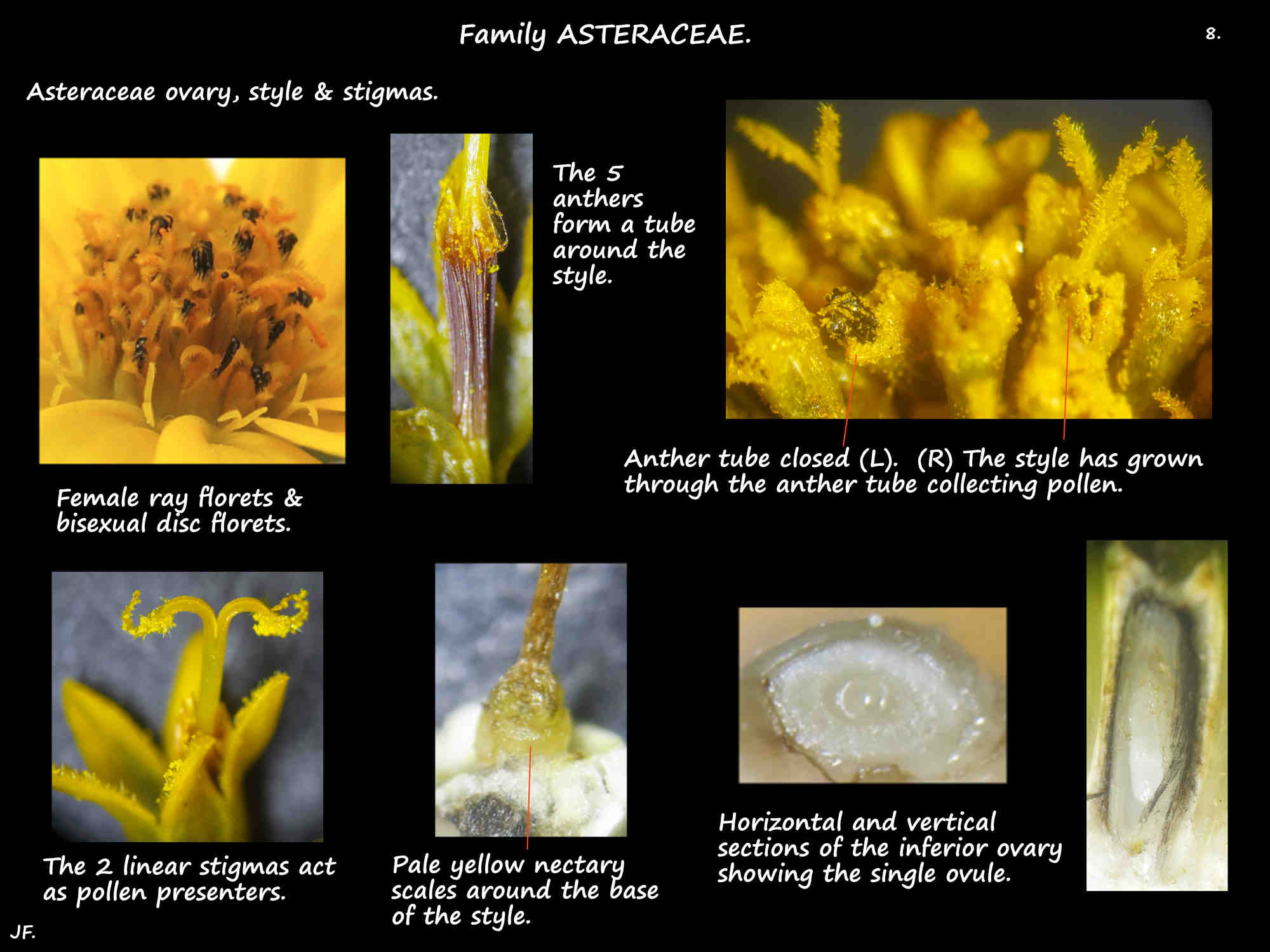Asteraceae.
The Daisy or Aster family was previously known as Compositae and still is in some places.
Mabberely uses Compositae and the Australian National Botanic Gardens uses Asteraceae.
It is the second largest flowering plant family after the Orchidaceae.
There are 1200 to over 1600 genera and 21,400 to over 32,000 species and The Plant List recognises 61,500 synonyms.
Australia has about 1417 native species in 288 genera and up to 300 introduced species that are weeds.
The family can be divided into 24 to 40 Tribes or 5 to 13 subfamilies.
Mabberley recognises 13 subfamilies some with up to 15 sections.
Dividing them into subfamilies:
The Asteroideae subfamily has around 1130 genera and 16,200 species including Cineraria, Senecio,
Calendula, Ozothamus, Helichrysum, Xerochrysum, Aster, Brachycome, Erigeron, Chrysanthemum
and Tanacetum.
Carduoideae has around 83 genera and 2,500 species including Cirsium, Cynaria (artichokes), Centaurea, Arctotis, Gazania and lettuce.
The ‘Helianthe Alliance’ has Ageratum, Gaillardia, Coreopsis, Tagetes, Echinacea, Helianthus and Rudbekia.
Mutisioideae has 58 genera and 750 species including Gerberas.
The other subfamilies are Barnadesioideae, Cichorioideae, Corymbioideae, Gochnatioideae,
Gymnarrhenoideae, Hecastocleidoideae, Pertyoideae, Stifftioideae and Wunderlichioideae.
**********************
Many are used as cut flowers and garden ornamentals.
Plants are usually easy to identify as members of the family with their flower heads composed of multiple small florets surrounded by an involucre of bracts, modified sepals, the anthers joined into a tube and an inferior ovary.
Identifying any of the hundreds of small white or yellow ‘daisies’ can be nearly impossible for an amateur.
There are plants in other families with flowers that look like a daisy.
Most members of the family are annual, biennial (last 2 years) or perennial herbs.
There are some shrubs, sub shrubs, trees and vines.
In Australia 20% of the natives are shrubs or trees.
Herbs and shrubs can be from 10 cm up to 4 m high, climbers to 3 m long and trees can be over 5 m.
The stems are cylindrical or ribbed, sometimes winged and they often have prickles.
There may be various types of hairs with or without glands and the hairs can be sparse to densely woolly.
Stems and leaves may contain latex and the leaves may be gland-dotted.
Leaves are mostly alternately arranged and in spirals.
Some are opposite or in a basal rosette and they are rarely in whorls.
They can be on petioles that may have wings or, when sessile (directly attached) the base of the blade may clasp the stem.
The blade may be simple, lobed, trifoliate or palmately or pinnately dissected.
The final divisions may be thread-like giving the leaves a feathery appearance.
The edges may be smooth or toothed and there are often glandular hairs or spines.
The base of the leaf may have a lobe or auricle on each side.
Almost all Asteraceae have flowers in a head or capitulum (pl. capitula) that can be terminal, axillary or leaf-opposed.
An inflorescence can be a solitary head or a variously arranged branched cluster (a cyme, raceme, corymb or panicle).
Each head can have a few florets up to hundreds in a dense cluster.
The heads may or may not be on a stalk or peduncle that can be smooth to densely hairy with simple or glandular hairs.
Flowers are on a receptacle which is an extension of the stem above the level of insertion of the perianth.
It may be flat, slightly convex, conical or columnar and with a smooth surface or be pitted from where the florets are attached.
There are two types of receptacles the paleate and epaleate (with and without paleae).
Paleae (single Palea) are scales that may be present at the base of some or all of the florets.
They can be membranous or rigid, with a blunt or pointed tip and may have a hood.
They may have a red or purplish tip or lines (veins) down them and be smooth or have some hairs.
Collectively they are referred to as the chaff.
Involucral bracts.
The heads are usually surrounded by an involucre of protective bracts known as phyllaries.
There can be 5 to 50 phyllaries in 3 to 5 (1 to 15 or more) series around the base of a head.
Usually spirally arranged they may be free, fused into a cup or overlap like tiles.
They can be lanceolate, oblanceolate, ovate or linear and of equal length or the inner or outer whorls may be longer.
Typically they are green and herbaceous but may have a dry papery edge.
Others are all dry, papery and almost colourless while some are coloured.
They may have stalked glands, hairs, prickles or spines.
There are occasionally calyculi which are 1 to 3 series of small bracts around the base of an involucre.
There is frequently a pappus at the top of the ovary around the base of the corolla.
It is composed of 2 to 5 (over 100) pappi that may be hairs, awns, scales or fine or coarse bristles from 4 to 40 mm long.
They may be smooth, have barbs, be feathery (plumose) or have hairs with or without glands.
They can be white, almost colourless or brick red, rose, pink, yellow or purplish.
The pappus may represent the calyx and it can persist on the receptacle or seeds or be deciduous.
Around any one head the pappi may be of a single type or a mix of types.
They are often useful in determining the genus or, more often the species of a daisy.
A floret is a small flower in a head and each may have one or more bracts or paleae at the base.
The corolla has 5 (3 to 6) petals joined to form a corolla tube with 0 to 5 lobes that are variously arranged.
Ray florets.
A head often looks like a single flower with the ray florets around the edge being the petals.
Ray florets are sessile (no stalk) and may have one or more paleae at the base.
Their long or short corolla tube has 5 lobes with one, the strap-like ligule being up to 4 cm or so long.
In these florets there may be 4 small lobes on the top of the tube.
Other ray florets have 2 or 3 small lobes on the ligule with 3 or 2 small ones on the tube.
The bilaterally symmetric ray florets are neuter or females that may have staminodes.
A disk/disc floret is a sessile flower with one or more paleae at the base.
It is radially symmetric with 5 (3 to 6) short lobes on the rim of the corolla tube.
They may be the only flowers in a head but typically they form a central disc surrounded by ray florets.
Disk florets can be bisexual or unisexual and in various combinations on the heads in an inflorescence.
Filiform florets are peripheral ray florets that have a very slender tube with no ligule or a minute one with
very small or no lobes. They are usually female.
Ligulate florets have 5 lobes on the ligule. These two are not common.
Petals can be white, yellow, pink, red, orange, blue, purple or brown and may be different colours on each side.
Florets may be bisexual, staminate (male), pistillate (female) or sterile (neuter).
These occur in different combinations in the various types of heads with the three main types of heads being:
1. Radiate heads have both disc and ray florets.
a.) The outer 1 or more series are ray florets that may be female or neuter and they usually have 3 lobes on the ligule.
b.) The central disc florets are mostly bisexual and open from the edge in. This is the most common type seen in the Asteraceae.
2. Ligulate heads have only ray florets with 5 teeth on the ligule and they may be bisexual, male or female.
3. Discoid heads have all disk florets with 5 small lobes and they may be bisexual, male or female.
4. Disciform heads have all disc florets with the central ones usually being bisexual or staminate and the peripheral ones female.
Bisexual florets.
There are usually 5 stamens inserted onto the corolla tube and alternating with the petals.
The filaments are free and the anthers are usually fused to form a tube around the style and stigma.
The basifixed anthers open inwards via long slits.
There is usually a short appendage on the top of the anthers and sometimes a basal tail that may have a fringe of hairs.
There are usually scale-like nectaries on top of the inferior ovary.
The ovary of 2 (3) fused carpels has 1 locule with a single ovule with basal placentation.
There is a single apical style that divides into 2 (3) branches that initially lie together low down in the anther tube.
Each branch has a linear stigma on the inner side.
The outer side &/or tip of the branches may have short stiff hairs that collect pollen as the style grows through the anther tube.
When free of the anther tube the style branches separate and present the pollen for pollinators.
The fruit is a cypsela (plural cypselae) which is a dry indehiscent single seeded fruit derived from an inferior ovary.
They are commonly referred to as achenes which are similar but from a superior ovary.
They may be cylindrical, flattened sideways, winged or have up to 10 ribs.
There may be a beak at the top sometimes with a ring/s of teeth below it.
The pappus and/or the paleae may remain attached and they are sometimes densely woolly.
Burrs have thick barbed apical spines and a few fruit are drupes.
J.F.

